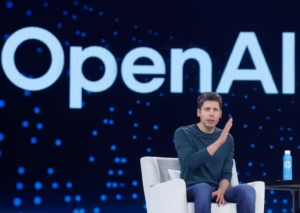AI crawlers are automated bots that scan the internet to collect massive amounts of data, often used to train artificial intelligence systems. These tools are becoming more common as companies race to build smarter AI models, but their growing presence has raised concerns about privacy, copyright, and fairness for content creators.
AI crawlers function by visiting web pages and gathering data such as text, images, and videos. They move through websites by following links, similar to how traditional search engine crawlers like Googlebot operate. However, AI crawlers are not just indexing content for search results. Instead, they gather information to feed large machine learning models used in applications like chatbots, image recognition, and recommendation systems.
These crawlers are used by major tech firms, research labs, and startups developing artificial intelligence tools. Companies like OpenAI, Google, Meta, and Anthropic have all developed or used AI crawlers to collect web content. In some cases, data brokers also use these bots to build large databases that are sold to AI developers.
AI crawlers target a wide range of websites. These include news portals, social media platforms, blogs, academic databases, e-commerce sites, and image-sharing platforms. The goal is to collect as much diverse and high-quality content as possible to help AI systems learn language patterns, visual recognition, and reasoning skills.
But as AI crawlers continue to expand their reach, they have become the subject of growing controversy. One major concern is unauthorized data collection. Many websites report that these bots scrape their content without permission, often copying full articles, images, and code. This has led to accusations of copyright violations, especially when the content is used to train commercial AI tools without licensing agreements or compensation.
Another issue is the impact on website traffic. Before the rise of AI systems, search engines sent users directly to the source of the content. This allowed publishers to earn revenue through ads and subscriptions. Now, with AI platforms offering direct answers, users often get the information they need without visiting the original websites. This shift reduces web traffic and lowers earnings for publishers and independent creators.
There are also technical challenges. Some AI crawlers consume significant server resources, causing performance issues or downtime for smaller websites. Additionally, these bots may collect personal or sensitive data unintentionally, raising privacy concerns.
To address these issues, many website owners rely on a tool called robots.txt. This file tells crawlers which pages they are allowed or not allowed to access. While some AI companies claim they respect these rules, others are accused of ignoring them. As a result, some content creators feel their rights are being overlooked.
In response, internet infrastructure providers are taking action. In 2025, Cloudflare, a major content delivery network, began blocking AI crawlers by default for all new websites using its services. The move allows site owners to decide whether to allow, block, or charge AI companies for access to their content. This change gives more control back to publishers and aims to ensure that data scraping is done responsibly.
Known AI crawlers include GPTBot, used by OpenAI; CCBot, linked to Common Crawl; AnthropicAI; and Google-Extended, designed to support AI training for Gemini. Each of these bots identifies itself with a specific user-agent name and has varying policies about data use and opt-out options.
Legal experts say that the debate over AI crawlers could reshape how AI is built in the future. Courts and lawmakers are examining whether scraping web content for machine learning without consent is a legal or ethical practice. Some suggest that stricter regulations and licensing models may be necessary to protect the interests of content creators while still supporting AI innovation.
As demand for smarter AI tools continues to grow, AI crawlers will remain a critical part of the development process. But the conversation around their use is far from settled. Questions about data ownership, digital rights, and fairness are likely to shape how these tools are used in the years ahead.







